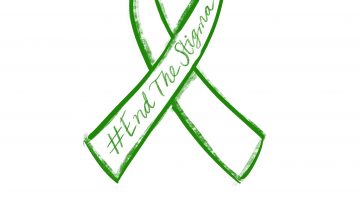The dark comparison of the movie “Contagion” to the current-day pandemic was brought to life in a dialogue from the University of Nevada, Reno. The Joe Crowley Student Union Theater presented the 2011 Steven Soderbergh film “Contagion” on Oct. 19. The film depicts a deadly airborne virus wreaking havoc on American society.
In a venue dotted with masked students grappling with a real-life pandemic which has dominated the world for the past two years, the irony could not have been more palpable.
Billed to students as a movie event with a dialogue session, the event was hosted by UNR’s Human Research Protection Program, also known as Research Integrity.
The organization bolsters its role in providing resources, support and training to faculty and students who conduct campus-related research projects.
For this occasion, Research Integrity’s selection was more than self-explanatory. The film has received attention for its intense yet plausible public service announcement-esque portrayal of professional virologists, especially recently with the arrival of the COVID-19 pandemic.
The film features several highly recognizable actors and actresses, including Matt Damon, Kate Winslet, Lawrence Fishburne, Jude Law and Jennifer Ehle.
Throughout a montage-filled 2 hours, the audience watched as a fictional virus killed beloved family members, paralyzed entire communities and fueled a national campaign of misinformation which likely caused the deaths of many who lay well-beyond the plague’s reach.
Like many of cinema history’s most memorable monsters, the film’s MEV-1 disease assumes a villain-like presence as doctors, public figures and even ordinary people fight to become the hero of the unprecedented public health crisis.
However, just as the credits rolled and the characters faded away into celluloid-frozen eternity, the audience at the Joe found themselves in the company of a real-life hero of the pandemic age.
Farah K Madhani-Lovely, M.D., a pulmonologist at Renown Health, emerged from a side door in the theater, almost as if she had stepped out of the movie herself.

Noah Scott/Nevada Sagebrush
Farah K Madhani-Lovely, M.D. enters the stage to discuss the connections between the movie “Contagion” and the current COVID-19 pandemic.
Her first words were simple, yet stinging.
“How did they get it so right?”
Dr. Madhani-Lovely was unwavering in her appraisal of the work’s accuracy, an aspect which dominated the evening’s discussion. She said the film was so similar to today’s experience.
“We’re in it,” she told students. “We’re living through it right now.”
In the following 25 minutes, Dr. Madhani-Lovely covered a variety of topics regarding professional life during the pandemic, all through Soderbergh’s deeply prescient drama.
Almost immediately, she evoked images in “Contagion” of overrun hospitals and deathly-ill patients as an everyday reality for medical professionals such as herself.
Be it oven-heating N95 masks or adapting to resource scarcity in Northern Nevada, she made it clear even the strongest struggled to survive.
“We [the providers] didn’t know if we would make it through the pandemic,” she said.
Though the doctor was eager to explain how researchers in the current day developed vaccines against COVID-19, the audience — which consisted mainly of pre-med, independent study and post-baccalaureate students — were less worried about what happens during drug trials and more about what goes on amid the trials of public opinion.
Nick Lopez, a post-baccalaureate student at UNR’s School of Medicine, said he felt the “worst thing” which could happen in any public health emergency related to the widespread panic, was shown in the film.
In addressing scenes which depicted looting and medicine shortages, Madhani-Lovely reflected on how many of her patients went crazy at the height of the pandemic.
“[There were] people yelling at us, demanding prescriptions,” she said.
More terrifyingly accurate, as Lopez had put it, was the movie’s depiction of internet-originating falsehoods misguiding millions of vulnerable citizens.
One aspect of “Contagion” which seemed to plant a seed in viewers’ minds was the inclusion of the eastern Asian-native plant Forsythia.
Forsythia is a “miracle cure” pushed by an opportunistic blogger named Alan Krumwiede, brought to life in shatteringly snotty form by Jude Law.
Questioners in the audience were quick to point out the substance’s parallels to Hydroxychloroquine, an anti-malaria medication bolstered by right-wing commentators over the past year and a half.
Like Forsythia, the medicine saw an explosive increase in prescriptions despite lackluster evidence supporting its protection against COVID-19. And like with Krumwiede, there have been notable instances of private individuals immorally profiting from the promotion of these drugs in a time of mass hysteria.
“Hydroxychloroquine is good for what it’s used for,” said Madhani-Lovely. “But ask us how many people have come in with liver failure due to that drug. People were dying, and they wanted something, something that would cure [the virus].”
These macabre recollections of avoidable suffering casted a formidable shadow over the young audience. As a result, the topic of discussion frequently shifted from past strain due to the crisis to the present success in ending it.
This was when Madhani-Lovely’s remarks about ethics in research seized the spotlight, specifically related to the current outbreak.
“Getting information was hard … We had to meet about it and figure out if it was truly real,” she said.
Desperation was an emotion too familiar to the established MD. But where there was reconciliation, there was resolve.
Though she described the decision made in the film by Dr. Ally Hextall, played by Jennifer Ehle, to self-experiment an unapproved MEV-1 vaccine as unethical, she was content with how the fictional doctor acted in the lead up to the discovery.
Referring to developments in the past year regarding COVID-19 vaccinations, she stated “all the vaccines–Pfizer, Moderna, Johnson & Johnson” conducted months-long trials.
Such endeavors were dramatized extensively in “Contagion”, with bulky protective suits and large freezers occupying the film’s visual grammar at critical moments.
Though the journey behind receiving a vaccine was accelerated for storytelling purposes, the depiction was not completely beyond the realm of possibility.
“Usually, the approval is a longer process,” she said.
Nevertheless, the question of if reality has proved more unbelievable than fiction loomed as comparisons were drawn between COVID-19 and “Contagion”.
As of November 2021, over five million people worldwide have died from COVID-19. Though the figure is nowhere near “Contagion”’s MEV-1’s kill count of 26 million, the irreparable loss of human life differs from the movie in one crucial, unaddressed category—carelessness.
Between pandemic-skeptic global leaders and the rise of the anti-vaccination movement, there was an unstated feeling humanity will continue to act as its flawed and frenzied self, even as the current crisis slowly fades to black.
“It was quite a mess in terms of getting literature out there,” Madhani-Lovely said. “I think [COVID-19 vaccine hesitancy] will come up again.”
Still, after urging the audience to routinely check the Washoe Health Department’s COVID-19 bulletin, she shared a glimmer of optimism for the future, which she compared to the second half of the movie.
“Our numbers are going down … and people are doing okay,” she said.
And even as the 50 or so students in the theater rose from their seats and reentered an all-too-familiar, pandemic-burdened society, there emerged some added hope for a Hollywood ending to this treacherous saga.
Wyatt Layland can be reached at jaedynyoung@sagebrush.unr.edu or on Twitter @NevadaSagebrush.











